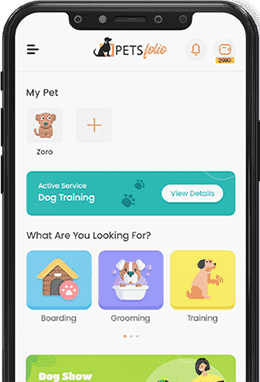What Your Puppy Need At Each Stage Of Life
Did you know that as it grows up to become an adult, your pooch will require numerous types of care and attention? You must ensure his requirements are addressed throughout each stage of growth if you want a well-adjusted and social dog. You can set the stage for a magnificent dog by starting with adequate training at each developmental stage and establishing suitable rules to ensure your puppy is fully assimilated into the clan. We’ll review what your puppy requires from birth until you pick them up until they are fully grown adults.
There are five unique phases in the growth of a puppy. Puppy development goes through some of these stages at its own pace; therefore, these times can change. As we can see, each developmental Period calls for particular requirements.
Neonatal Period: up to 6-8 weeks
Puppy development starts at birth with this stage, which lasts till adulthood. Puppies only have taste and touch senses at this age and completely depend on their mother. The development of hearing and smell senses will occur during the next two to four weeks. Puppies’ eyes start to open as their incisors start to develop. Additionally, your puppy’s personality starts to emerge at this age. Puppies will play with their litter mates, engage with them, wag their tails, stand, take a brief stroll, and bark.
-
Care tips:
Puppies’ interactions with their mama and littermates during this Period have the greatest influence. Although sensation and feel are already present at birth, eyes open, infant’s teeth erupt, and the child begins to acquire hearing and a keen sense of smell around the two-to-four-week mark. Humans usually do little more than observe while a mother dog takes care of her puppies as they need. However, for the puppy in your care to expand and put on weight properly, if he has been taken from his mother, you must ensure he is kept warm and fed.
Socialization period: 8-12 weeks
Puppies are just starting to play and learn how to communicate with one another at this age. Aside from that, they are discovering how to interact with other dogs and how they fit into their pack’s hierarchy. Both of these traits—biting prowess and curiosity—are growing. Nipping behaviors develop as they learn how to bite their mother and other litter members.
They will be fully capable of using all of their senses and be prepared to go home with their new owners by the time they are 7-9 weeks old. When you bring your puppy home, typically between 7 and 12 weeks old, the puppy is still in the midst of his socialization phase. As a result, you must expose your puppy to as many different dogs, people, things, and environments as possible.
-
Care tips:
Your puppy should be prepared to move in with you at around eight weeks old. They have some social abilities, a restrained bite, and motor performance. Give them plenty of positive instruction to assist them in overcoming their fear if they exhibit any symptoms. It would help if you took your dog to the vet around week eight. Talk about the ideal puppy diet, nursing schedule, and grooming advice. Now is the perfect moment to sign up your newest family member for Trupanion. Don’t forget to ask your vet if they have an Exam Day Offer! However, as your dog explores, chews, and grows, medical insurance could come in helpful. Hopefully, they remain out of trouble.
Testing period: 3-6 months
At this point, your puppy will start to push the limits of what is acceptable in its environment. Using their owners and some other animals as subjects, they will push the envelope. The manners of many mature dogs will start to be enforced at this age. This time frame may see the emergence of problematic behaviors. If you haven’t already, begin a training regimen with your dog as soon as possible. Finding a strong positive training class is fantastic, but it’s equally important to practice frequently at home. Your puppy may need to gnaw a lot as they start teething to soothe its irritated gums. To stop people from chewing on furniture or other household things excessively, provide lots of appropriate chew toys.
-
Care tips:
Chewing is a frequent side effect of teething, which your puppy will experience at this age. Before your dog begins to gnaw on your furniture:
- Don’t let him wander off alone.
- Toys and chew sticks should be available in enough for him.
- Avoid having your dog chew on your belongings by using commercial sprays or gels.
If your puppy is in agony due to teething, try dipping a cloth toy in chicken stock and freezing it. When given to your puppy frozen, this can be used as a chew toy and will soothe sore gums. When puppies reach 6 months old, when the top fangs (canine teeth) develop, teething is typically over.
Adolescence period: 6-18 months
The adolescent stage of a puppy’s development might be the most challenging. The hormones your adorable puppy will start manufacturing as it ages into adolescence could cause behavioral changes. Dogs experience puberty far earlier than humans; in the case of tiny breeds, it can begin as early as a few months old, while it begins for larger breeds at around nine or ten months. For larger breed dogs, adolescence lasts until they are two or three years old, while maturity occurs in smaller breed dogs at around 18 months. Usually, the development happens more slowly in larger dogs.
-
Care tips:
Regarding the many signs of puberty in dogs, you can speak with your dog’s veterinarian. Determining whether to spay or neuter your puppy now is a good idea because male and female puppies can develop sexual activity and exhibit sexual behavior. Females can potentially become pregnant during their initial heat, typically around six months old. The status in the family will likely continue to be tested or reinforced by your dog. Although they may seem less concerned about winning your favor, it is a natural part of their growth.
Mature stage: 1 year and above
The majority of canines mature fully at about 12 months of age. Larger dogs might get there later, and smaller dogs might get there sooner. This point has mostly established your dog’s routines and personality. They require your affection, consideration, and a sense of belonging to the pack. As you experience your furry child’s puppy development stages, you understand all that goes into being a “pawrent.” Take as many pictures and videos of your dog acting ridiculously foolish, then send them to your friends.
Subscribe to the Petsfolio blog
Get the latest news, updates, and more right to your inbox
Enjoy this post?
Check out some more great articles and other content.
Humans love language, and so do dogs. One thing is sure about dogs they show uncondit...
Read The ArticleThe world’s oldest holistic health system, Ayurveda, has been practised for ove...
Read The ArticleYou’ve heard it a million times before: dogs are man’s best friend. And y...
Read The Article
 Login
Login Download App
Download App Cart
Cart Support
Support











